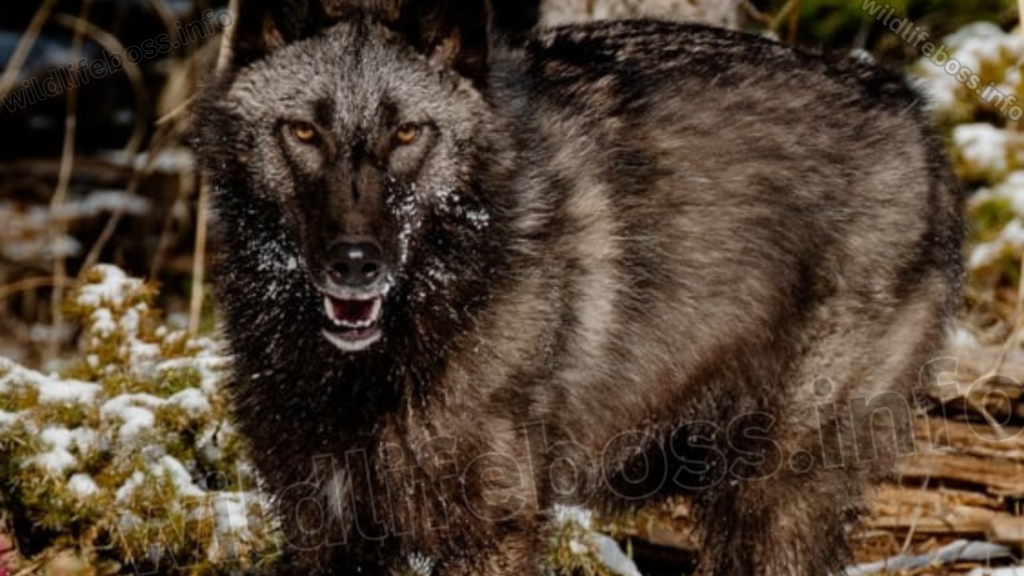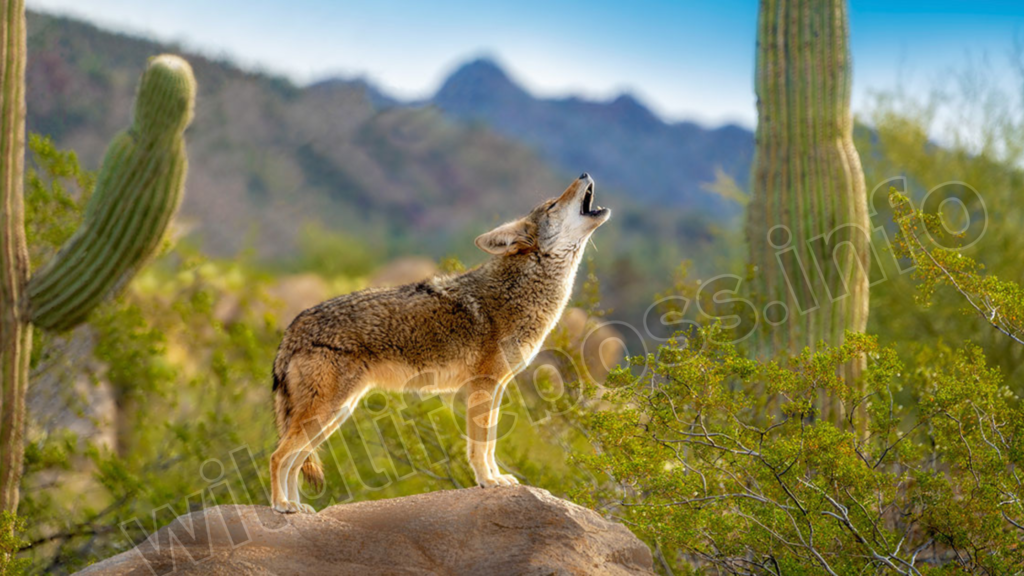Two canid species found in North America are red wolves and coyotes. Although the former’s range is greater, the two can occasionally coexist in the same habitat.
When they unite, what happens? If both of them battled, who would win?
Red wolves are larger, heavier, and stronger than coyotes. Their bite is stronger and their teeth are longer. A red wolf would therefore nearly always prevail in a one-on-one conflict. The only opportunity for coyotes to survive would be if a pack encountered a single red wolf. In a one-on-one situation, though, coyotes may flee the aggressors due to their superior speed.
A brief comparison between coyote Vs red wolf is shown in the table below:
| Characteristic | Coyote | Red Wolf |
|---|---|---|
| Body size | 3.3 to 4.3 feet | 4.0 to 5.5 feet |
| Paw size | 2 x 2.5 inches | 3 x 4.5 inches |
| Color | Gray tan or brown | Reddish brown or buff |
| Weight | 20 to 50 pounds | 45 to 80 pounds |
| Speed | 43 mph | 30 mph |
| Teeth length | 1.45 inches | 2.5 inches |
| Bite force | 727 PSI | 957 PSI |
| Strike force | Up to 2,150 lb.-ft./s | Up to 2,400 lb.-ft./s |
| Behavior | Social; aggressive | Social; aggressive |
| Diet | Omnivore | Omnivore |
| Habitat | North & Central America | Southeastern United States |
| Conservation status | Least concern | Critically endangered |
The coyote data in the above table relates to coyote averages and is generic. There may be differences in coyote subspecies’ size and strength.
The maximum weight that each species may achieve was multiplied by the peak speed to determine the strike forces in the table.
Coyote Vs Red Wolf: Key Differences And Similarities

Coyotes and red wolves are two species that belong to the Canidae family. Since they have such a similar appearance, some people contend that red wolves are a hybrid coyote subspecies rather than true wolves.
Even though a different, more recent study found that red wolves are a unique wolf species, they nonetheless have several characteristics in common with coyotes.
Important distinctions do exist, nevertheless, and they can aid in accurately identifying the species.
1. Body Size
Their stature is the first obvious distinction between red wolves and coyotes.
Compared to coyotes, red wolves are larger, ranging in length from 4 to 5.5 feet. Actually, coyotes can reach lengths of 3.3 to 4.3 feet.
At an average shoulder height of 24 inches, coyotes are roughly two inches shorter than red wolves, who normally have a shoulder height of around 26 inches.
You should keep in mind that red wolves can be coyote-lookalikes that are larger than typical coyotes, even if these differences might not appear like much in the field.
In the Southeast United States, where coyotes and red wolves may coexist in the same environment, this distinction is especially crucial for hunting coyotes.
Red wolves are a protected and endangered species that is not subject to hunting laws.
2. Paw Size

The comparison between the red wolf and the coyote supports the idea that larger paws are nearly invariably associated with larger bodies.
Coyotes often have paws that are 1.5 to 2 inches wide and 2.5 inches long. The paws of red wolves are likewise rectangular, however they are only roughly 3 inches wide and 4.5 inches long.
In addition to their advantage in combat due to their larger paws, red wolves are useful to know when attempting to identify the species from paw prints on the ground.
In contrast, gray wolves’ paws are significantly bigger, typically measuring more than 4.5 inches.
3. Color
The color of the fur is another indicator that distinguishes red wolves from coyotes.
In general, coyotes are dark or grayish tan, with occasional white streaks.
Red wolves are reddish brown or buff in appearance, with white on the lower jaw and the upper body. Along the spine, there are a few black strikes, and the nose is similarly reddish.
4. Weight

Given that they typically weigh between 45 and 80 pounds, red wolves also have an edge in terms of weight.
The weight of coyotes is much lower, ranging from 20 to 50 pounds. Although their smaller size and weight give them an advantage when it comes to speed, coyotes are really weaker than red wolves and other wolf species because of their smaller stature.
5. Speed
Coyotes score points for speed, as we have already discussed. In a sprint, they can go up to 43 miles per hour. Red wolves can only reach a top speed of about 30 miles per hour, which is much slower.
Coyotes can acquire momentum and increase their impact force due to their rapid speed. They still lack the strength to combat red wolves, though.
6. Teeth Length
The size of their teeth is another distinction that gives red wolves considerable advantages.
The dental formulae and skull shapes of red wolves and coyotes are comparable. On the other hand, coyote skulls resemble tiny wolf skulls when compared to one another. They have shorter teeth in addition to being smaller.
In terms of length, coyotes typically have canine teeth that reach a maximum length of 1.45 inches.
In contrast, the canines of red wolves can grow up to 2.5 inches in length. Because of this, they have an advantage when hunting, protecting themselves, and battling off rivals for resources and food.
7. Bite Force

A stronger bite power is not always associated with larger skulls and jaws. But when it comes to red wolves and coyotes, the latter really bite more forcefully.
Gray wolves have a biting force quotient (BFQ) of 106.14, or almost 1,500 PSI, according to a study comparing the bite forces of other Canidae species.
Red wolves have a bite force quotient of 99.17 and weaker jaws than gray wolves. It comes out to be approximately 957 PSI.
Coyotes’ jaws are significantly weaker; they can only bite with a force of up to 727 PSI.
To put things in perspective, red wolves can crush bones with a single bite, whereas coyotes can easily gnaw bones and pull the flesh off of them.
8. Strike Force
The strike force of coyotes and wolves has been the subject of very few research. However, by multiplying the mass by the speed of the hit, the impact force may be easily calculated.
Each red wolf and coyote will have a unique strike force because each individual might differ in both mass and speed.
But for the purposes of this comparison, we took into account the highest weight and greatest speed that each species is capable of.
Coyotes have a strike force of roughly 2,150 lb.-ft./s, or 66 pounds of force, depending on various conditions. Despite being much heavier, red wolves move more slowly. They have an impact force of up to 2,400 lb.-ft./s, or around 75 pounds.
9. Behavior
Because they belong to the same family, coyotes and red wolves behave similarly. Despite their preference for hunting and feeding alone rather than in groups, coyotes are gregarious animals. They do, however, also form packs. Coyote vs red wolf are monogamous and a coupled partner and their offspring typically form a group.
The alpha couple is the only one in the pack that mates and has children. Both red wolves and coyotes, however, rely on their subordinates to help raise their young.
Both coyote vs red wolf have different breeding seasons, which run from January to March. The gestation period for both species is approximately 60 to 65 days, and each litter typically contains six pups.
10. Diet

Another similarity is the food that coyote vs red wolf consume. Although the food of red wolves is more carnivorous than that of coyotes, both species share comparable preferences and are omnivores.
Red wolves, like grey wolves, hunt exclusively and consume their own kills. Among the primary prey are rodents, pigs, rabbits, and ungulates. Red wolves typically hunt for up to ten days at a time in one location before moving to a new one.
In times when food is scarce, they can become scavengers and add fruits to their diets. Compared to coyote vs red wolf are far more opportunistic and consume a lot more carrion. They are still quick hunters, though, and they still like fresh meat.
One distinction is that coyotes mostly target small prey, including mice and bunnies. Other common foods include insects, birds, and snakes. Coyotes rarely hunt in packs, which is the primary reason they target smaller prey.
They add fruits and other plant components to their diets, just like red wolves do, and they even exploit their closeness to human communities by hunting pets and cattle and searching through trash for food scraps.
11. Habitat
On rare occasions, Coyote vs red wolf can coexist in the same area.
Coyotes are a widespread species in North and Central America, ranging from Canada to Mexico and Panama. Because of their remarkable adaptability, they can be found in a wide range of habitats, including grasslands, woods, dunes, and residential areas.
The Southeast region of the US is home to red wolves. They used to live in lowland woods, wetlands, and mountains.
Nevertheless, red wolves are currently nearly extinct in the wild and are being gradually brought back to inaccessible alpine and swampy regions.
12. Conservation Status
Although Coyote vs red wolf have many characteristics, they are very distinct in terms of their conservation status.
In North America, coyotes are among the most prevalent species of wild canids. They are listed on the IUCN Red List as least worried and are easy to find. The same list lists red wolves as critically endangered.
With an estimated population of only 20 to 30 individuals, adult red wolves are much less common in the wild than coyotes. With a population of no more than 250, the situation for red wolves in captivity isn’t much better.
Current data suggests that red wolves may go extinct in less than a decade. To stop the extinction process, however, scientists and environmentalists are collaborating.
Who Would Win A Fight?
Coyote vs red wolf share many characteristics. Because of their similar DNA, the two species can live together in the same habitats and geographical areas.
These species may encounter each other, and if wolves and coyotes begin to compete for food, conflicts may result. Red wolves would prevail in nearly every circumstance.
Coyote vs red wolf both form packs, as do the majority of wild canids. However, red wolves hunt in packs, while coyotes typically hunt or forage alone. In comparison to coyotes, red wolves are bigger and more powerful.
When attacked with a group of red wolves, a coyote has little chance of surviving, and a lone red wolf might easily kill one. However, the coyote was able to use its speed to avoid the larger rivals and survive.
Only in the event that a pack of coyotes encounters a lone red wolf can coyotes emerge triumphant.
Read Also About Coyotes:
Fox Vs Coyote-14 Best Differences (Size, Bite Force Etc)
Can Coyotes Climb Trees?(The Amazing Climbing Secrets of Coyotes)

